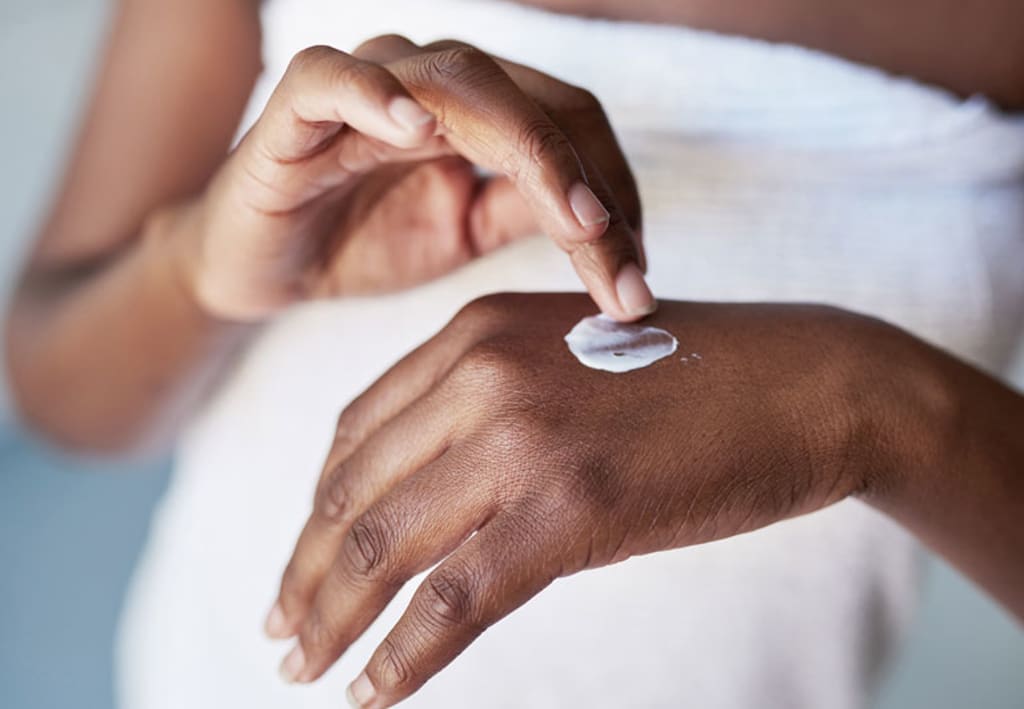Itching its types, causes, and 7 tips for dealing with it
Istanbul: Itching is one of the annoying symptoms that we are exposed to in our daily lives, and its types, causes and duration vary, which in some cases requires medical intervention.

Dr. Mukhtar Fatih B Deli, Director of International Patients and Pediatrics Specialist at Medical Point Hospital in Izmir, Turkey, provides advice and information on itching for children and adults across Anatolia.
In his speech, B. Daily says, "Itchy skin causes a disturbing feeling in children and adults, and may lead to skin bleeding sometimes and secondary infection, and with the passage of time, the skin can become scaly and red because of it."
Doctor B. Daily reviews some of the causes of itching, saying:
Dry skin is one of the most important causes, and it is common in adults, as the skin becomes drier with age.
Skin disorders of all kinds, especially in children, including medicinal or nutritional disorders.
Nervous system disorders This occurs when pressure is placed on one of the nerves, which may cause local itching in the part of the body that is connected to this nerve.
Mental disorders for which no physical cause can be found.
Allergies as a result of medicines and chemicals when they are used internally, or when they are applied to the skin.
Skin and systemic allergic disorders The itching in this part results from histamine, which is stored in human mast cells, which are part of the immune system and play a role in allergic responses.
Skin disorders are the most common causes of itching, including, according to Dr. B. Daily:
Urticaria (red swellings) caused by systemic conditions or medications and chemicals.
Atopic dermatitis, also known as eczema.
Allergic contact dermatitis caused by contact with a particular substance.
Dry or “ichthyosis” skin.
Insect bites, snakes, etc.
Parasitic skin infections such as scabies.
Fungal skin infection.
On the other hand, the doctor explains that among the most important consequences of skin itching are: “rough or crusty spots, lumps, spots or pimples, skin stretch marks, dryness or cracking of the skin, dermatitis, and sometimes the itching lasts for a long time and is intense, and its place becomes more exciting the more you scratch.” ".
And he says, “Not all cases of itching attacks need to see a doctor for evaluation, as most cases are not usually serious, except for what is rare, such as a liver disorder.”
Doctor B. Daily recommends that those who suffer from some conditions see a doctor, which are as follows:
Those who are underweight, tired or sweat at night.
Persistent itching for more than two weeks without improvement after treatment.
If the itching appears suddenly and there are no apparent reasons for its occurrence.
If the itching spreads over the entire body.
If the itching is severe and severe, it hinders daily activity and prevents sleep.
Here are 7 tips your doctor can give you to deal with itching:
1- In the types that last for a long time, sometimes for more than 6 weeks, the patient should see a doctor as soon as possible so that there are no complications that affect his activity.
2- If the itching is widespread and appears after a brief use of a medication, it must be discontinued because it may be the cause.
3- If the itching (usually with a rash) is limited to an area that was in contact with a substance that causes contact dermatitis, then it is likely that the substance is the cause.
4- Sometimes doctors conduct a comprehensive medical examination to find out the systemic causes and conduct medical tests and blood tests to diagnose the condition.
5- Treat itching with skin care and systemic and topical treatments taken by mouth or injection when itching is widespread, or if topical treatments are ineffective.
6- In most cases, antihistamines, such as hydroxyzine, cyproheptadine, and colestyramine are used to treat itching caused by liver disorders.
7- The most important thing in treating itching in adults and children is to research and deal with the causes, while taking measures that help reduce its severity.
Researchers identify the genetic basis for facial changes in Down syndrome
Researchers found that having a third copy of the Dyrk1a gene, and at least three other genes, was responsible for the structural changes to the face and skull of Down syndrome.
Down syndrome affects 1 in 800 live births and is known as a "genetic dose disorder", which means it involves changes in the number of copies of a gene.
People with Down syndrome are known to have three copies of chromosome 21 instead of just two. However, it is not clear exactly which genes duplicated within this chromosome are responsible for the different aspects of the syndrome.
Using genetic engineering, teams led by Victor Tipulovic of the Francis Crick Institute and Elizabeth Fisher of King's College London created strains of mice with duplications of three regions on mouse chromosome 16, which mimics the presence of a third chromosome 21.
Mice show many of the features associated with Down syndrome, including changes in the shape of the face and skull.
Previous research has linked a gene called Dyrk1a to Down syndrome, so the researchers wanted to test how it affects craniofacial abnormalities.
The team showed that mice with an extra copy of Dyrk1a had fewer cells in the bones at the front of the skull and in the face. Also, cartilaginous joints called synchondroses at the base of the skull are abnormally fused together.
These effects were partially reversed when the third copy of Dyrk1a was removed, demonstrating that three copies of Dyrk1a are necessary to cause these changes in the skull.
The researchers believe that the presence of a third copy of Dyrk1a inhibits the growth of neural crest cells, which are needed for bone formation at the front of the skull.
In addition to Dyrk1a, the research showed that three other genes also contribute to changes in the skull, but more research is needed to confirm their identity.
Victor Tipulevich, group chair of the Down Syndrome Center in Creek, explained: "There are currently limited treatments for aspects of Down syndrome that have a negative impact on their plate, such as congenital heart disease and cognitive impairment, so it is essential that we identify the genes that are important. Understanding the genes involved in head and facial development gives us "Evidence of other aspects of Down syndrome such as heart disease. And because Dyrk1a is key to craniofacial abnormalities, it is very likely that it is involved in other changes in Down syndrome as well."
Researchers at King's College London used morphometry tools to map the changing skull shape of mice, and these changes in skull shape showed that they were remarkably similar to those observed in people with Down syndrome.
This research forms part of an ongoing project to understand the genetics of Down syndrome. The researchers will then aim to identify genes associated with heart defects and cognitive impairment, bringing them one step closer to understanding how to develop targeted therapies for aspects of Down syndrome that affect health.
A "terrifying" opration clip of the moment a doctor discovered a "colony of spiders" living in a woman's ear
A opration clip showed the moment doctors discovered a horrific colony of spiders living in a woman's ear.
The woman came to hospital in China with what initially appeared to be tinnitus (the perception of sound in the absence of a matching external sound). But medics at Huidong County People's Hospital, Sichuan Province, soon realized that strange sounds and pain were coming from a spider lodged in her ear.
The doctor sent a camera probe under the woman's ear to find a "fake" eardrum woven by a spider to raise a colony of its offspring.
Shocking opration footage from the endoscope shows how the doctor examines the patient's right ear with special tweezers equipped with a camera.
The doctor finds what looks like an eardrum but realizes it is a silk net. Then when he pushes her away, a terrifying family-raising spider swoops in after her and attacks the lander.
The doctor from the Department of Otolaryngology, Han Xinglong, told local media: "The tissue made by this spider is very similar to the eardrum. When I first inserted the otoscope, nothing abnormal was found. But when I looked "Up close, something seemed to be moving below. I pushed the spider's web aside, and it almost ran away, but was finally removed smoothly."
Fortunately for the woman, the spider was not venomous, and the woman suffered only minor damage to her ear canal.
The hospital has warned individuals not to remove foreign bodies themselves, and urged them to seek professional help when available due to the risk of causing further injury.
Source: The Sun
About the Creator
News Correct
Information WorldWide MORE INFORMATION






Comments
There are no comments for this story
Be the first to respond and start the conversation.